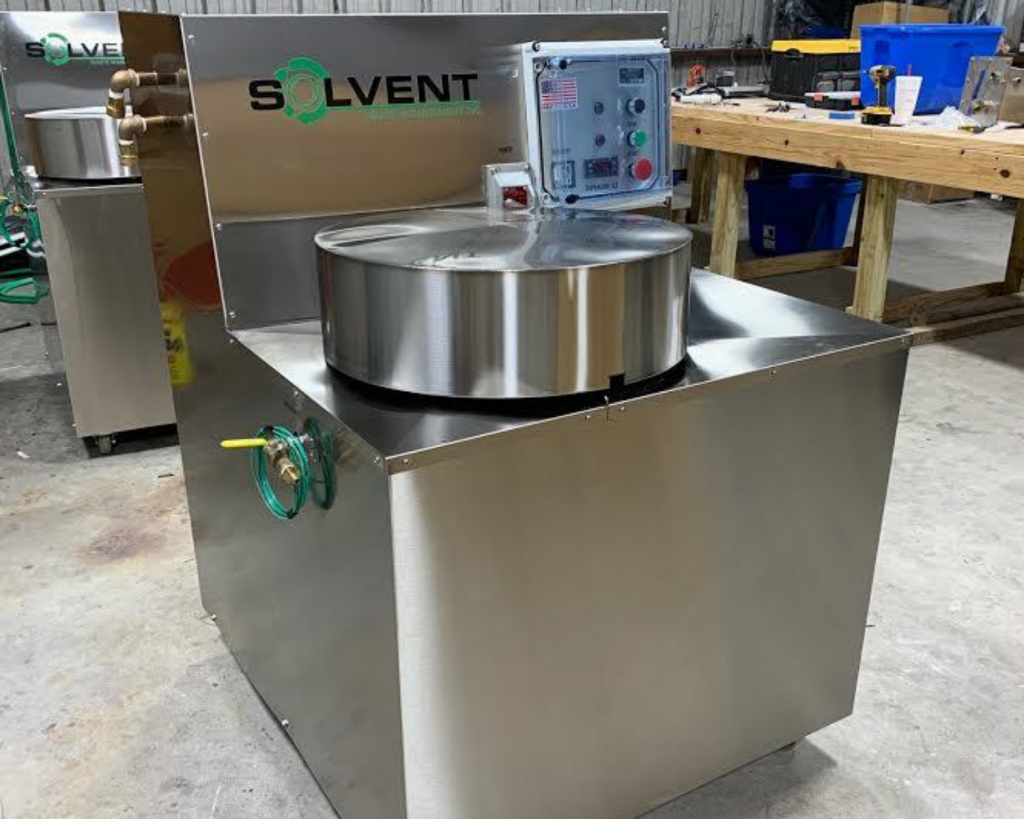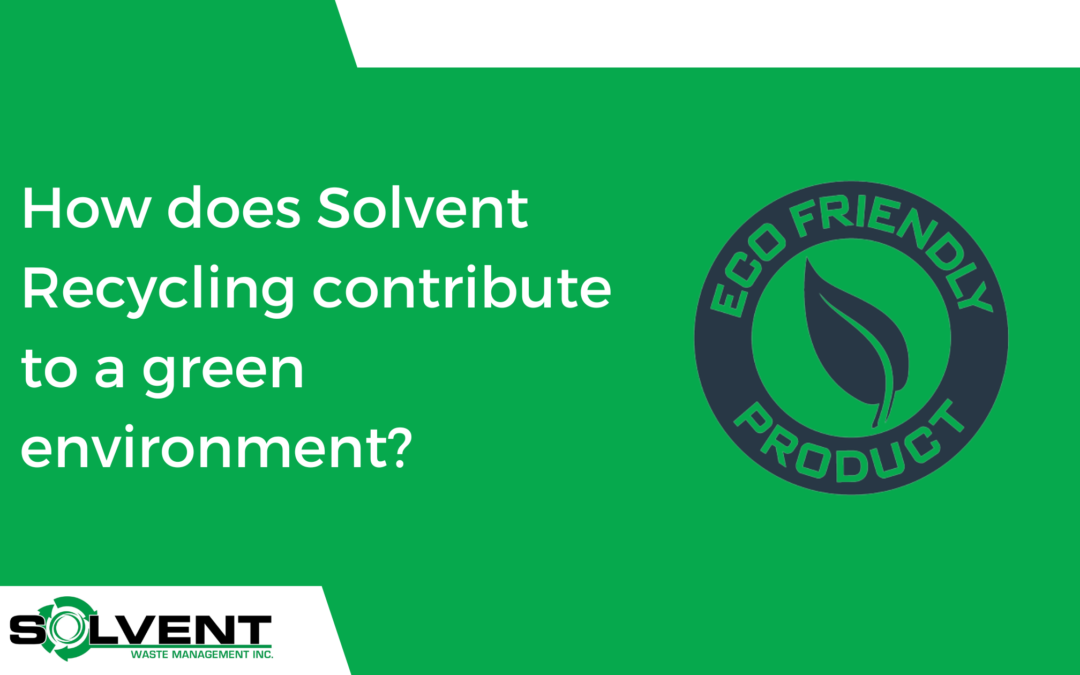With the massive change in customer and investor demand, solvents are gaining popularity among all industries. With its increased usage, the emission is at its peak. Thus, industries must develop new ways to recycle these solvents and reuse them for further use.
Recycling is a process that reduces emissions, contributing to a greener environment. Although, Govt. has imposed several rules and regulations depending on the specific regions and the solvent usage. But, companies do not follow them as required.
So, how can industries effectively contribute to a green environment through solvent recycling? If you are unaware of what goes into this procedure, read this blog and get the required information.
But, before that, you must consider the nature of your solvent.
Is your solvent green?
Whenever your industry starts using solvents, you must analyze the composition and the nature of your solvents to check if there could be any harmful impact on the environment. Solvents are chemicals that are dissolved with some other substance. You can recycle your solvents to get other materials back. It depends on what recycling process you choose.
Manufacturing some solvents requires additional solvents that can significantly impact manufacturing sustainability.
Whatever metrics you consider, whether the amount of generated hazardous waste, harmful emissions, or increased carbon footprint, your solvent waste can negatively impact your operation and environment. But, there is good news for the industries depending on solvents for manufacturing.
The solvent should not be considered a villain in the environment, as industries will use it no matter what. They can seamlessly use the latest tool, technologies, and business approaches to effectively neutralize this increased environmental impact. So, they must adopt proper management to make solvents more environmentally friendly.
What is the environmental cost of your solvent?
If you are one of those facilities that generate solvent, you must be aware of its harmful impact on nature, people, and surroundings. Apart from this impact, there is another significant impact that everyone generally ignores: energy cost and impact.
While using, processing, and recycling the solvent, industries use too much energy, contributing to the overall carbon footprint.
So, understanding the actual environmental cost of your solvent is necessary and involves considering several factors, like other mixtures, bases, etc.
The life cycle of solvent includes the process that begins with extracting oil. This collected oil is stored in an oil well where iron horses are used to pump oil into containers stored at the industry’s storage facilities and then transported to a refinery. The refinery uses the oil to produce your solvent, which is then transported to distributors and end users.
The remaining are transported to concerned disposal sites to get incinerated. Each step requires additional energy to progress.
When you dispose of the solvent, it leaves a carbon footprint contributing to greenhouse gases. Thus, taking care of this emission results in the hidden cost of your solvent. Thus, industries need to recycle their solvent to reduce their carbon footprint.
For more information, you can also refer to our latest blog on Is industrial solvent recycling profitable?
How to solve the solvent problem?
As the solvent life cycle ends, all the used resources, efforts, and energy get wasted at its disposal. It is estimated that more than 90% of solvents are disposed of improperly, leaving a huge carbon footprint.
Globally, industries are using millions of gallons of solvent. Thus, resolving this environmental impact is getting more critical. With such challenges, industries have got opportunities to improve their sustainability. But how?
- Recovering on-site energy
Recovering waste solvents is not always a cost-effective or practical option. So, industries consider the solvent end of life using thermal oxidation. However, it is unsuitable for recovery and reuse models, as it releases harmful smog-forming fugitive VOC emissions into the atmosphere.
To resolve the issue, industries use regenerative thermal oxidizer (RTO) technology that uses solvent emissions as fuel in the combustion process. Also, you can leverage the excess heat generated from the RTO exhaust further to heat the air, water, or oil, significantly reducing process operational energy needs.
- Reusing used solvent
Every industry must be aware of the famous R3 process for dramatically reducing the environmental impact of your solvents. Also, recycling your solvents helps reduce the production of new solvents.
Industries can also use fuel blending, which blends the solvent waste as a fuel source that can be used for other processes. The recycling solvent will reduce the carbon footprint as the process will be done internally with closed machines.
- Handling Fugitive Solvent Emissions
It is challenging to control the Fugitive solvent emissions and thus requires significant solutions. Every industry relies on the Reduce, reusing, and Recycling to maximize sustainable operation. But they must consider the fugitive emissions throughout a solvent material life cycle. For this, you can use the tank vent sequences while emptying and filling storage tanks for a smooth transition.
Segregation of these emissions is challenging, resulting in costly recovery.
Industries use different approaches to improve the handling of fugitive emissions, such as including Concentrator technology to adsorb solvent materials to improve recovery.
You can also refer to our latest blog on How solvent recycling saves 1 Million gallons of solvents a year with this one simple machine
Conclusion
Considering the overall picture and scenarios, it is evident that recycling solvents in any way help in reducing the environmental impact. Different companies use different solvents that require different methods to handle them. But the primary purpose of recycling solvents is to reduce the carbon footprint reducing the environmental impact.
This blog has explained some ways to help you deal with your harmful solvents effectively. If you cannot do it yourself and find it challenging to have a setup at your facility, then we are happy to help you deal with such emissions.
To discuss your solvent-related requirements with us. We are a call away.
About Solvent Waste Management
Since 1994, Solvent Waste Management, Inc. has assisted many companies in a variety of different industries not only improving their operations but also reducing costs.
Solvent Waste Management Inc. designs and manufactures solvent distillation equipment that cleans contaminated solvents, allowing users to restore and continuously reuse solvents – thereby saving money on the cost of disposal and the cost of new solvents.

Model SW8 Solvent Recovery System
Model SW30 Solvent Cleaning Machine
Model SW55 Solvent Recycler Machine
Model SW70 Solvent Recovery Equipment
Solvent Waste Management designs and manufactures solvent recycling equipment that cleans contaminated solvents in such a way that the customer can reclaim and reuse solvents again and again, thus saving on both the cost of solvent disposal and the cost of new materials.

